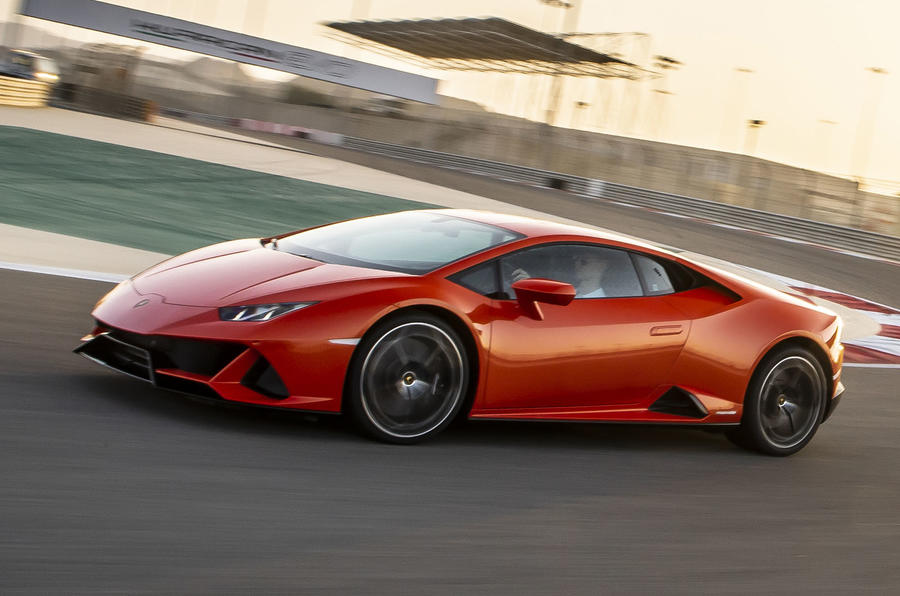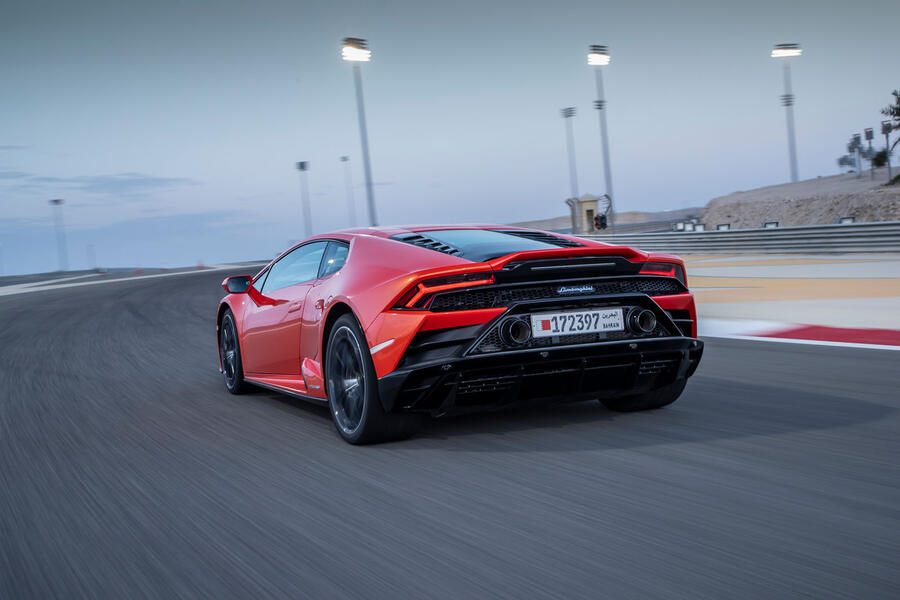What is it?
The Lamborghini Huracán Evo is less a mid-life facelift and more a comprehensive re-engineering exercise. Whereas the original Huracán was notable on the one hand for its show-stopping engine but characterised on the other by uninspiring dynamics, the Lamborghini more expensive, lightweight Huracán Performante that arrived two years ago was a genuinely brilliant supercar. This is Lamborghini’s attempt at bridging that gap.
The Huracán Evo doesn’t have the weight-saving measures of the Performante, nor its aerodynamic downforce. What it does have is the same uprated V10 engine (albeit with software differences) and a raft of new chassis technologies. Introduced for the first time on the Huracán are rear-wheel steering and torque vectoring, and those new systems - along with the existing dynamic steering, magnetic dampers, stability control and the powertrain - are all integrated into one central brain, called Lamborghini Dinamica Veicolo Integrata (LDVI).
The idea is that the various systems work in harmony, so rather than busily doing their own things and achieving not very much, they actually communicate with one another for the best results. The dampers, traction control and torque vectoring will operate together to deliver the best traction, for instance, all the while considering the steering angle and throttle position.
This is a first for Lamborghini and a significant development, although the likes of Ferrari and McLaren will tell you they also do something similar. Capable of responding in more or less real time (just 20 milliseconds), LDVI primes every one of the parameters under its control to make the Huracán Evo the most responsive and alert Lamborghini to date. It can even predict the driver’s intention one moment to the next, readying the torque vectoring, or the dynamic steering, or the rear-wheel steering even before the driver has made the anticipated input. And so the car responds ever more immediately. Despite being heavier than the Performante, the Huracán Evo is both more agile, says Lamborghini, and faster around the handling circuit at Nardo.
That special-edition model is powered by the familiar normally aspirated 5.2-litre V10, augmented with titanium inlet valves. It’s that same unit that’s been dropped into the Huracán Evo, but with its own engine management software. Power is up to 631bhp at 8000rpm and torque rises to 443lb ft at 6500rpm. With four-wheel drive, the Huracán Evo will register 62mph in just 2.9sec and run on to ‘more than’ 202mph.
There are further changes within the cabin, including a beautifully rendered 8.4in touchscreen display in the centre console, and revised bodywork, which improves aerodynamic efficiency. The airflow around, underneath and over the car is cleaner now, reducing drag, while downforce has leapt up by a factor of seven, thanks to the new front splitter and slotted rear spoiler (the Evo still doesn’t produce anything like the downforce of the Performante, though, which has far more prominent aerodynamic devices).
Interestingly, there still isn’t a customisable Ego mode, which means you cannot separate the firmness of the dampers from the drivetrain setting. That means Corsa mode, the loudest of three, will probably be usable only on race tracks and the very smoothest roads.

































































Join the debate
Add your comment
Here in the US, the Evo costs
Here in the US, the Evo costs $261,274 (+taxes). You can legally sell a kidney for around $262,000. Hmmm. Nah, there's no manual option. Does anything new tick all the boxes, NA, no EPAS, 3 pedals?
The 'unspoilered' Huracan....
Well, at least this version has lost that vile 'I'm a Saturday Sloane Avenue Twat' look....
Just avoid the gold wrap and the baseball cap.....and you might get to look like Bob Wallace in the original LP 400.
VW Huracan
Either V12 or it is no Lamborghini.
Anyway I'd go for 911.
But which one? A 911 with
But which one? A 911 with turbos is, by the same token, not a proper 911.